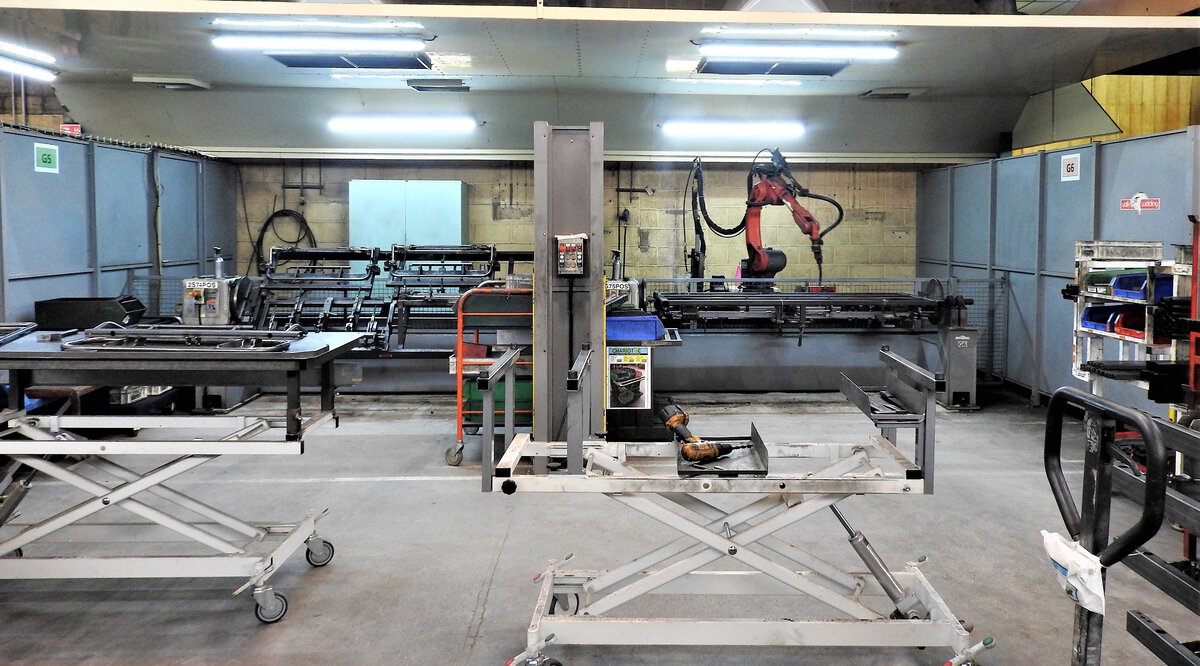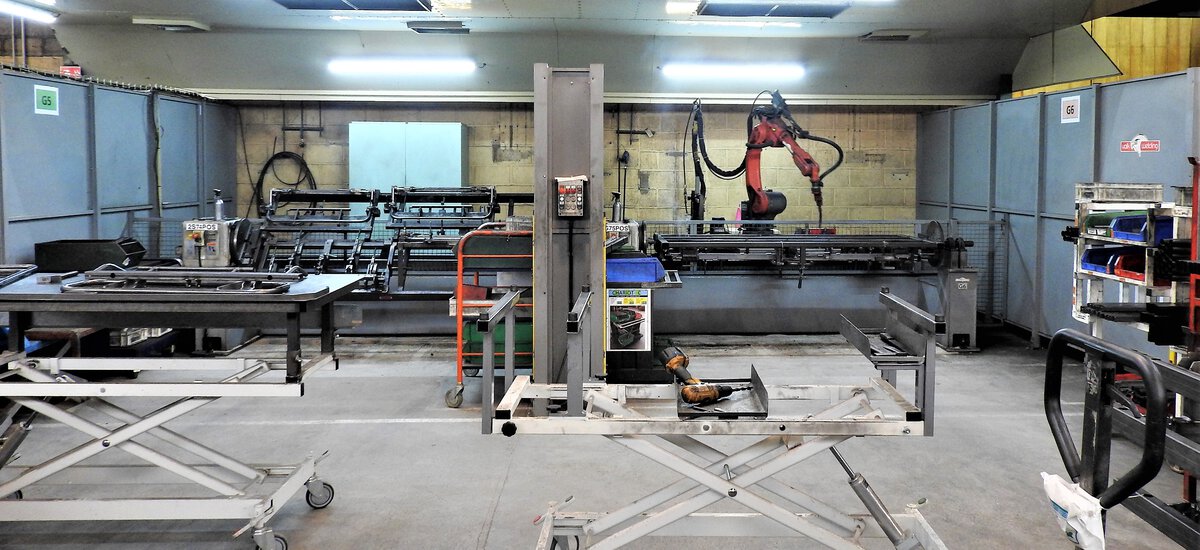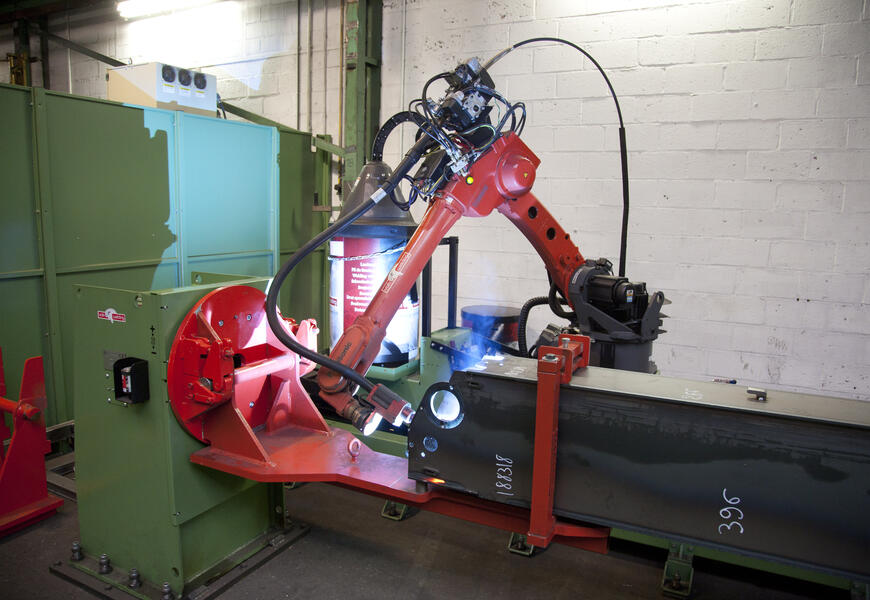One point of contact for our robotic welding
This latest acquisition integrates a Panasonic TL-1800WG robot equipped with Super Active Wire Process (SAWP) technology, a torch process with an incorporated servo-motor, combining welding quality and cost reduction. Piloted with new software, the SAWP generates a very stable arc transfer with virtually no spatter, whatever the orientation of the torch.
As with the first robot, the second is also mounted on a monobloc E-shaped beam, connecting the two workstations separated by blackout panels. Ultra rigid, this base facilitates the installation and precise adjustment of the assembly.
Each six-axis robot operates, alternately in pendular mode, on the welding zones thanks to its seventh linear axis. This principle allows the operator to load or unload one workspace while the robot is constantly in action on the other, for cycle times that last seven to eight minutes.
For both robots, MMO currently aligns 22 interchangeable welding jigs made in-house in order to optimize the positioning according to the welds to be performed automatically. Depending on the manufacturing orders, these templates are successively mounted on the indexed horizontal axis rotary positioner, which is 2500 mm long by 1200 mm in diameter and identical for each welding cell. This eighth axis is also controlled by the numerical control.
"What is most important with the second robot is that it operates from our existing programming, thanks to the use of "macros" in the DTPS off-line programming software. Moreover, this same PC-based software allows programming without interrupting production in order to study and simulate the welding trajectories with no risk of collisions. What makes our productions safe is that with Valk Welding, we have a single contact for all our robotized welding including operator training, up to the supply of the welding wire (10/10th) delivered in drums of 250”
www.mmomedical.fr






